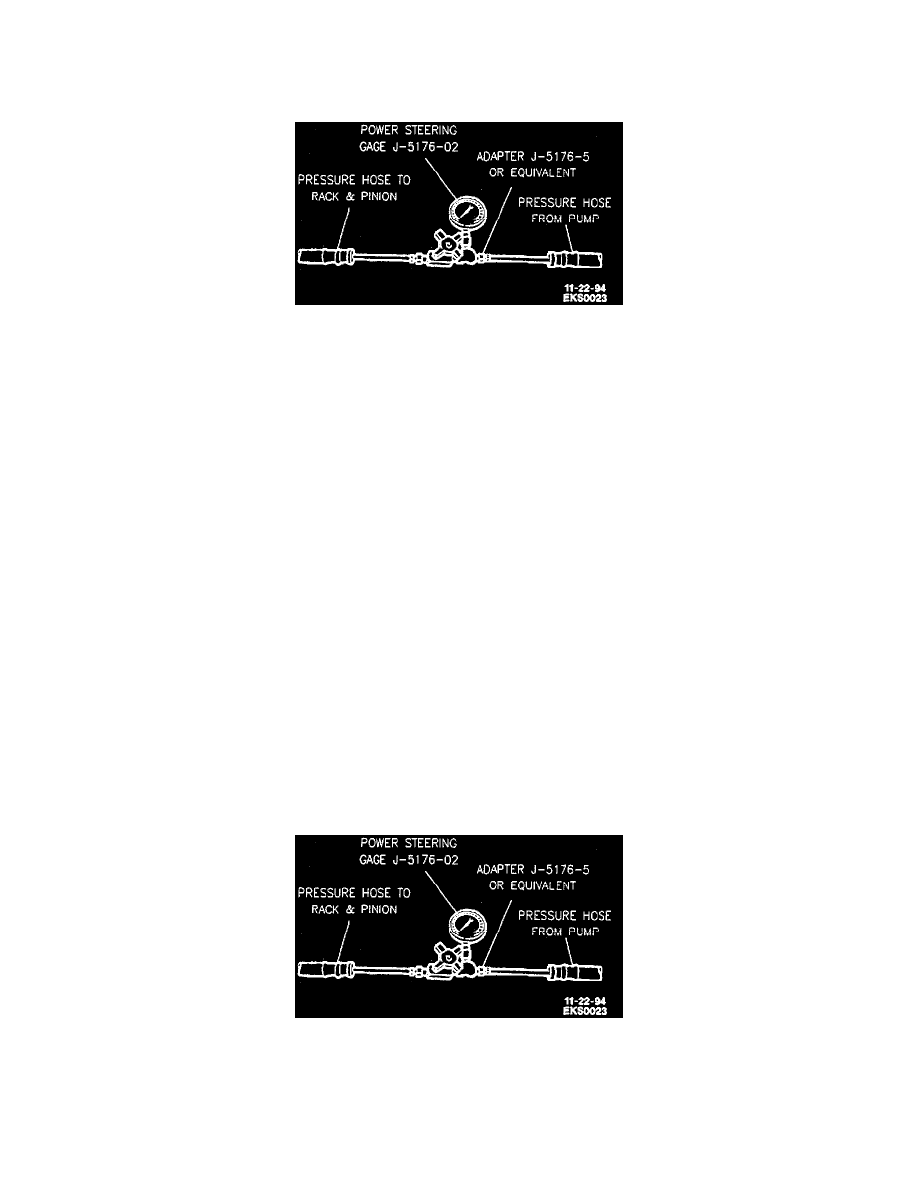DeVille d Elegance V8-4.6L VIN Y (1998)

Steering Gear: Component Tests and General Diagnostics
Without B9Q/V4U
Important
^
The power steering system may be tested using J 5176-E as described here. It can also be tested with available tool J 25323 Power Steering
Analyzer and adapter J 28579, which will measure flow rate as well as pressure.
1. Disconnect pressure hose at pump. Use a small container to catch any fluid which might leak.
2. Connect a spare pressure hose to pump.
3. Connect pressure gage J 5176 to both hoses using adapter J 5176-5.
4. Open valve on gage.
5. Start the engine. Allow the system to reach operating temperature, then check the fluid level and add fluid if required.
Important
^
When the engine is at normal operating temperature, the pressure reading on the gage (valve open) should be in the 552-862 kPa (80-125 psi)
range. If the pressure is more than 1380 kPa (200 psi), check the hoses for restrictions and the flow control valve for proper assembly.
6. Fully close the valve three times. (Do not leave the valve fully closed for more than 5 seconds, as the pump could be damaged.) Record the
pressure reading each time the valve is closed. Each reading should show at least 10343 kPa (1,500 psi). The three readings should be within 345
kPa (50 psi) of each other.
A. If the pressure readings are high enough and are within 345 kPa (50 psi) of each other, the pump is functioning properly.
B. If the pressure readings are high enough, but are not within 345 kPa (50 psi) of each other, the flow control valve in the pump is sticking.
Remove the valve; clean it and remove any burrs using crocus cloth or fine hone. If the system appears to be contaminated, flush it. If it is
exceptionally dirty, both the pump and the rack and pinion gear must be completely disassembled, cleaned and reassembled.
C. If the pressure readings are less than 10,343 kPa (1,500 psi), replace the flow control valve and recheck. If the pressures are still low, replace
the rotor and vanes.
7. If the pump checks to specification, leave the valve open and turn (or have turned) the steering wheel to both stops. Record the highest pressures
and compare with the highest pump pressure recorded. If the pressure at both stops is not the same as the maximum pressure, the rack and pinion is
leaking internally and must be disassembled and repaired.
8. Turn off the engine, then remove the testing gage and the spare hose. Reconnect the pressure hose, check the fluid level or make needed repairs.
With B9Q/V4U (Hearse/Coach)
Important
^
For proper operation of the power steering system, it is important that the tire pressure be at the required specifications. The required
specification for this vehicle is 294 kPa (44 psi). If proper tire inflation is not maintained, the power steering pump will go into bypass and
possibly fail.
^
The power steering system may be tested using J 5176-E as described here. It can also be tested with available tool J 25323 Power Steering
Analyzer and adapter J 28579, which will measure flow rate as well as pressure.
